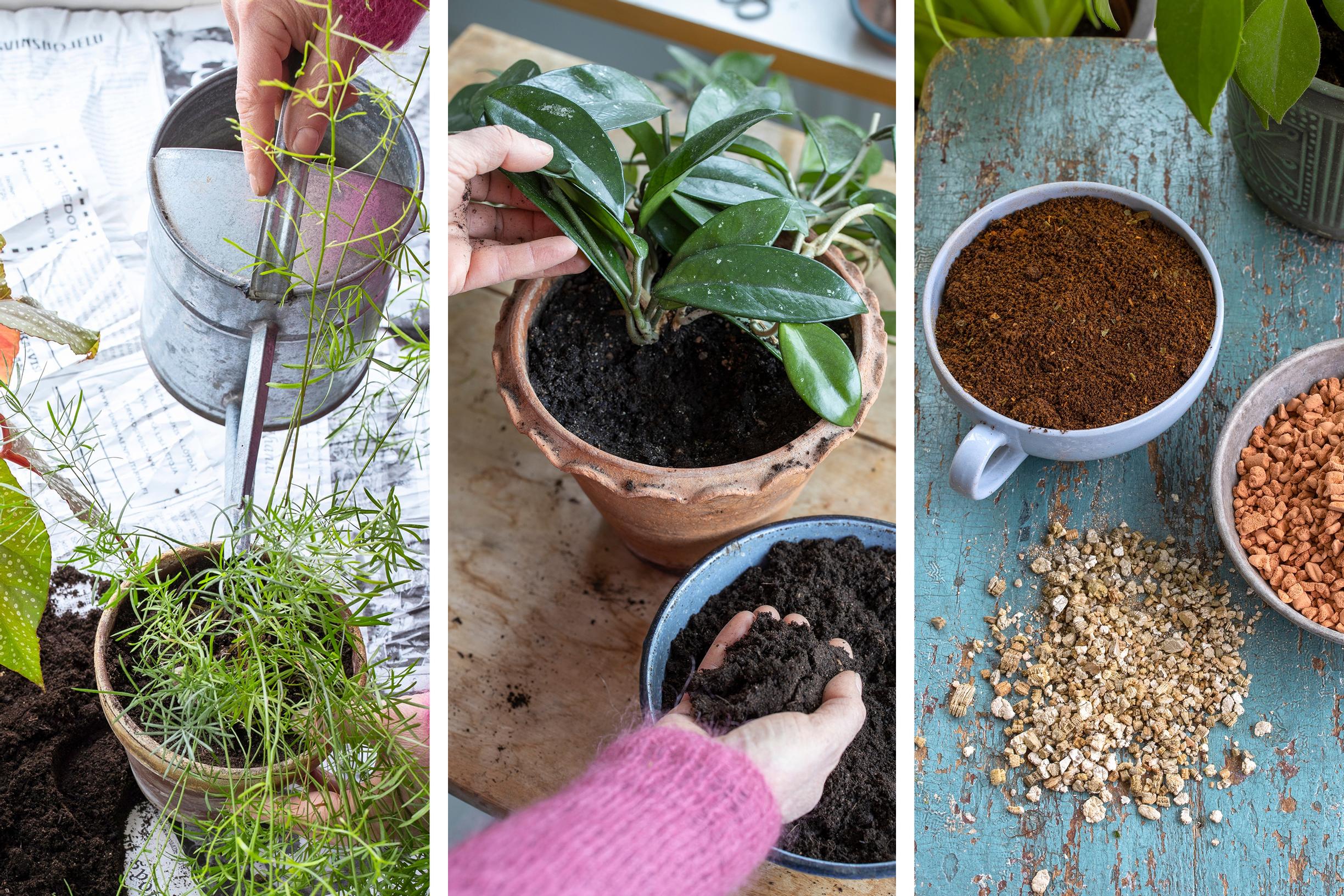
Wake up your houseplants: 6 essential tips for spring repotting and care
With the new season approaching, awaken your houseplants from their winter slumber. Both leaves and roots need attention, advises home gardening expert Tiina Ikonen from the Martha Association.
1. Time for a shower
All plants, except succulents and those with soft or fuzzy leaves, can be given a room-temperature shower. This removes dust from leaf joints and crevices that wiping cannot reach. Clean leaves photosynthesize more efficiently, allowing the plant to make the most of available light. Cover the soil surface with a plastic bag, especially if your plant is in a self-watering pot, so it doesn’t receive too much water at once.
2. Check the roots
Even if the pot is still the right size, the cause of your plant’s wilted state might lie in its roots or the soil. Turn the plant upside down and gently tap it out of its pot to check the condition of the roots. Overly wet roots can turn black, rot, and start to smell. Dry roots, on the other hand, are brown, stiff, and may even be hollow. In most plants, healthy root tips are light in color, though there are species with dark roots as well. When repotting, you can trim away unhealthy roots, shake off any loose soil, and replace it with fresh soil.


3. Choose the right soil
If the roots are in good condition, you can scoop away the top layer of soil with a spoon and add fresh soil. This also removes any mold that may have formed on the surface, which can indicate overwatering. Excess fertilizer may also accumulate on the surface. Opt for a mix high in humus rather than one high in peat. Cactus soil and other specialty mixes have a substrate structure tailored to the specific needs of certain plants.
4. Ensure a path for water
A common mistake is filling a self-watering pot’s soil column, which connects the roots to the water, with gravel. In self-watering pots, water needs to wick up to the plant’s roots effectively, so the pot isn’t drained. Choose a soil mix designed for self-watering pots, and fill the soil column with it too. Other pots can be drained using gravel or large pieces of eggshell to prevent water from stagnating around the roots.


5. What kind of haircut would you like?
While repotting and refreshing your plants for spring, you can tidy up the entire plant. Shrubby varieties that tolerate pruning well, like the weeping fig, can be shaped to your taste. If you’re taking cuttings for propagation, use a sharp knife or pruning shears. Regular scissors squeeze the plant’s vascular tissues, which may impair the cutting’s ability to grow.
6. An energy boost
Fresh soil will provide sufficient nutrients for about a month, but after that, additional fertilization is needed. An organic, slow-release fertilizer spike is the easiest option, with minimal risk of over-fertilization. A fast-acting liquid fertilizer mixed in water may be necessary later on as an additional supplement, if new growth is very spindly.


